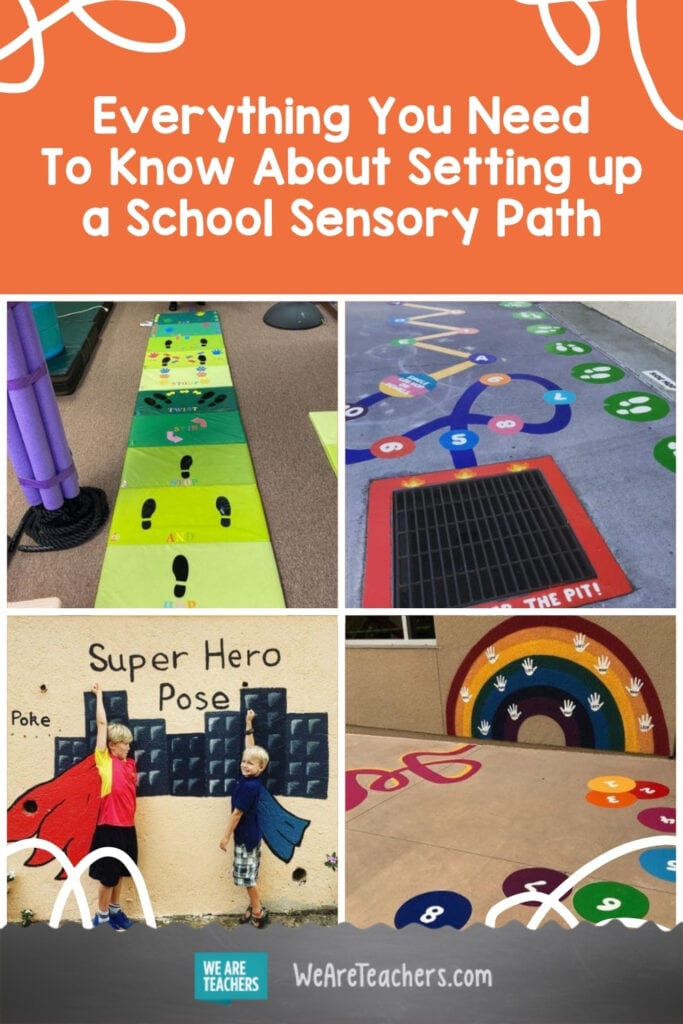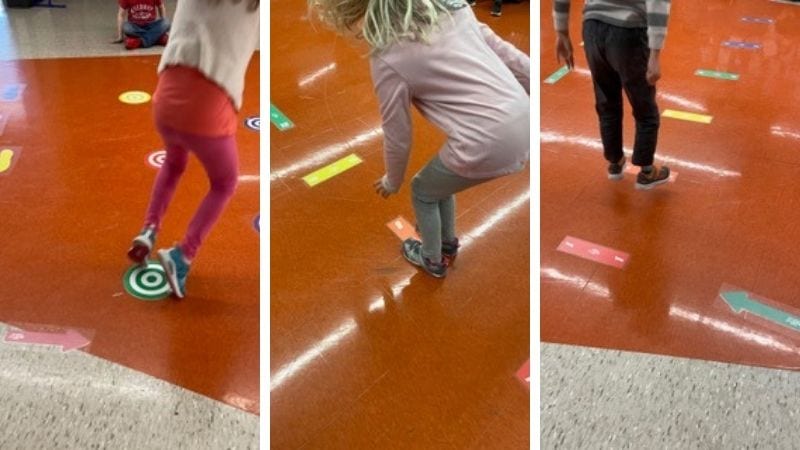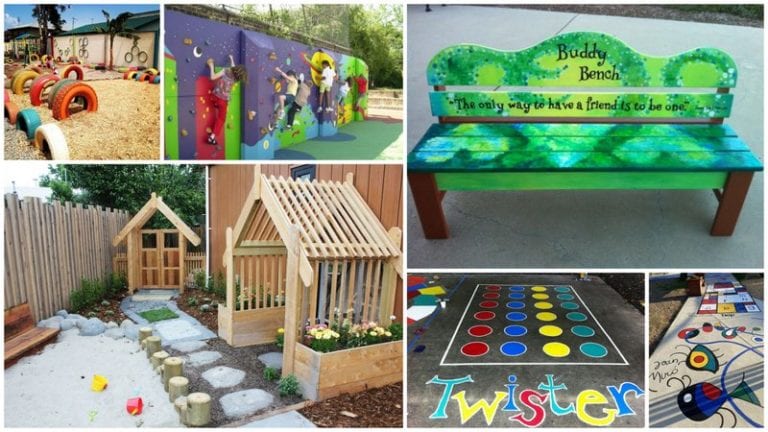Sitting still is a challenge for lots of kids (and adults!). Schools and teachers are starting to realize that children are actually more focused on learning when they’re given a chance to wriggle, fidget, and move around. That’s why classroom yoga breaks, flexible seating, and fidget gadgets have become popular. A sensory path is another cool option for helping kids re-focus their energy throughout the day. Find out how they work and what you need to know to create your own.
What is a sensory path?
A sensory path is a series of guided movements for kids to follow, shown by markings on the ground or walls. As students follow the path and complete the movements, they work off excess energy and develop their gross motor skills. The various movements on a path are often designed to engage different parts of the body and brain, from frog hops to spins and wall pushes. You’ll find sensory paths in school hallways or on playgrounds, from pre-K through middle schools.
Teachers often use sensory paths as their kids walk through a hallway between activities. (Yes, you really can train a group of kids to do this quietly!) These paths can be especially effective for students who experience frustration, anger, or other sensory overloads during a learning activity. Sending them out to the hall to work off some of those emotions can help them re-focus when they return to their desk.
Sensory path creation tips and inspiration
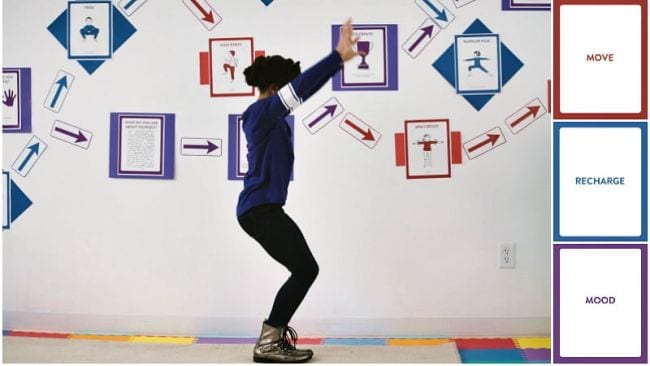
Good sensory paths have a wide variety of physical elements for kids to try and often include some learning concepts like counting or the alphabet. They’re colorful and engaging and tough enough to stand up to lots of jumping feet, day after day. Inside, try vinyl decals or even duct tape. For an outdoor movement maze, use paint to create paths on the playground or sidewalk. Here are some terrific ideas and inspiration to get you started.
Purchase sensory path decals
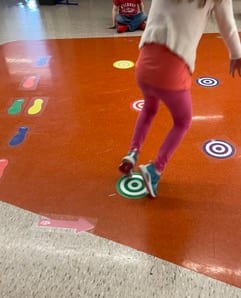
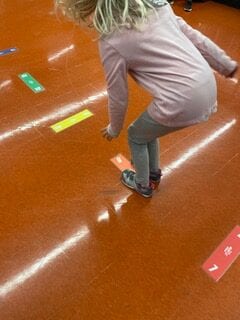
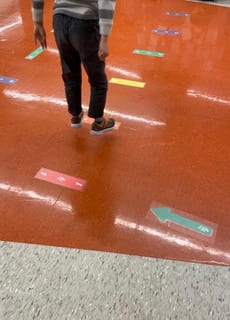
Schools can purchase specially-designed sensory path decals in a variety of themes. These are usually meant to be used indoors, though some may stand up to outdoor conditions. We like many of the options available from Moving Minds because they allow you to mix and match sensory path elements to meet your needs.
We sent second grade teacher Kelsey Muellner of Denver, Colorado, the SketchSpot Dry Erase Spots, ClassStix Directional Arrows, and Rainbow ClasStix, and here’s what she had to say:
“The kids really enjoyed having the sensory path as an option to help them regain their ability to focus, help them take a brain break when they were feeling frustrated, and to help them when they needed some movement. It has been helpful, especially during COVID, to have a place to be able to move and get some energy out. The dry erase spots make it easy to add a learning element for the day, such as to use a vocabulary word in a sentence.”
Take it outside
Try sensory paths on the playground, especially if you don’t have the funds for playground equipment. Kids can race, challenge each other, or play solo. Check out some of the inspiration we found on Instagram!
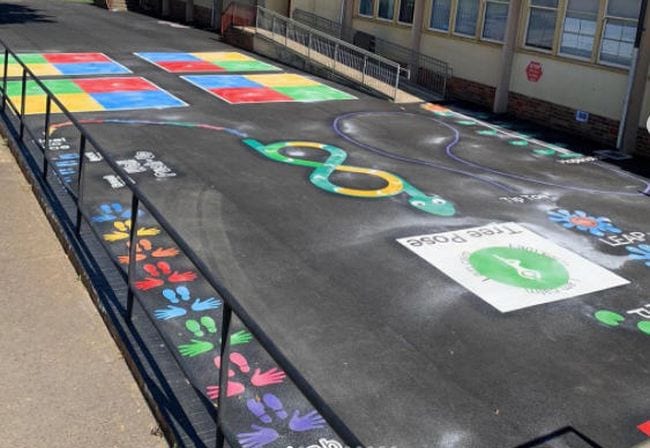
Consider adding yoga poses and other calming aspects to your path. Mindful movement can be just as valuable as running or hopping. See more details of this path at the link.
Source: @edumarking
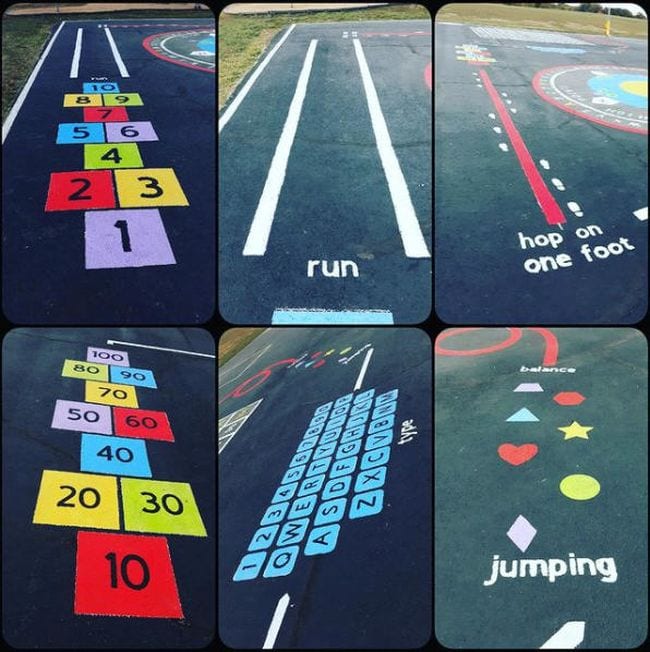
That oversized keyboard is genius! Kids will have fun learning the letters on the keyboard and practicing spelling words while they jump.
Source: @thesimplifiedclassroom
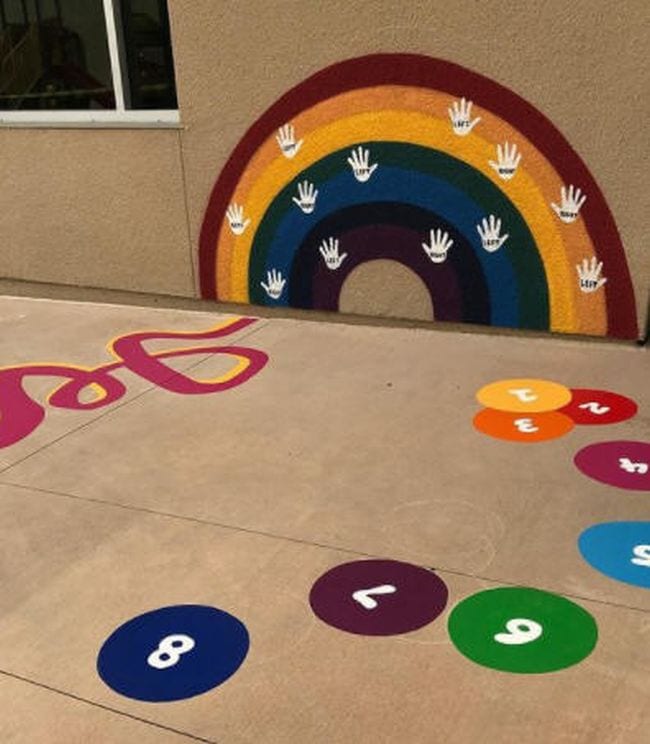
Don’t forget to incorporate walls into your path. Students can push off or leap high to slap a target.
Source: @mindfulmurals
Make a portable path
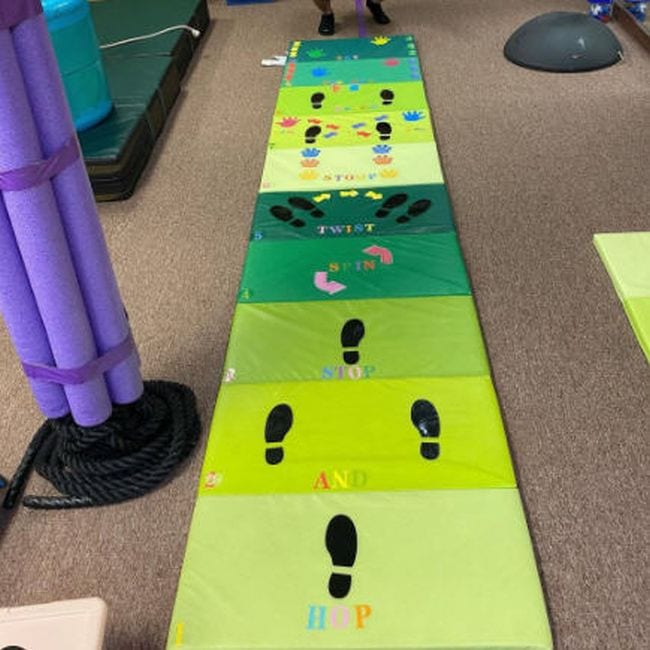
This is so clever! Turn an old gym mat into a portable path. Fold it up when you want it out of the way, or move it to a different classroom or corridor.
Source: @otapkids
Go simple with duct tape
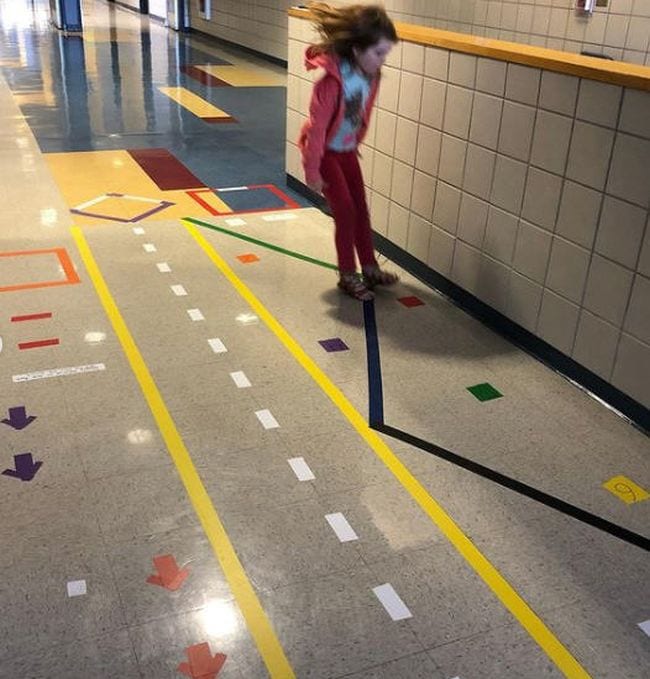
It doesn’t take expensive decals or permanent paint to create an engaging sensory path. Tape lines with instructions serve the same purpose and cost so much less.
Source: @whole.brain.connections
Use what you’ve got
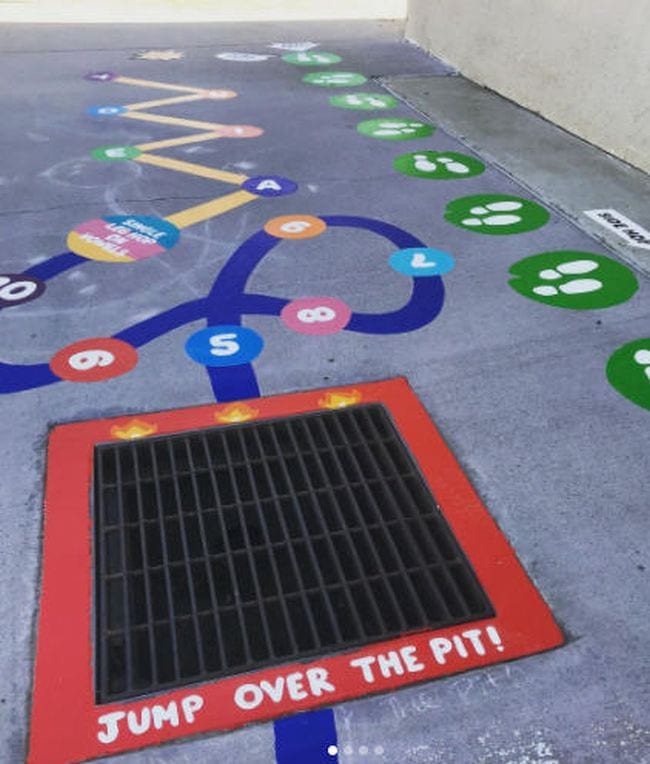
Turn obstructions into challenges! Wind around poles, leap over drains, and climb over obstacles.
Source: @mindfulmurals
Sketch a sidewalk chalk sensory path
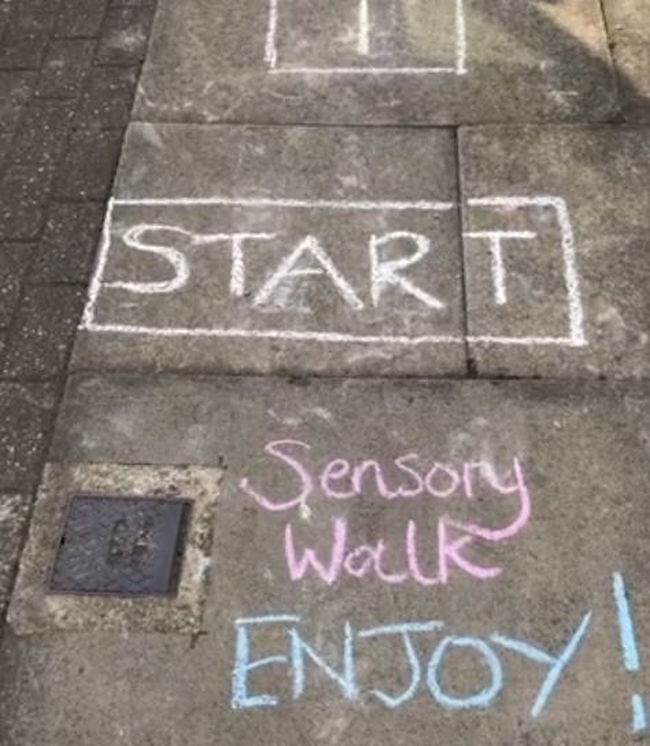
Want to give it a try without committing? Draw a sensory path using sidewalk chalk and see which elements are a hit and which ones need some work. See a video of this whole sensory walk at the link.
Source: @sjt.25
End with a superhero pose
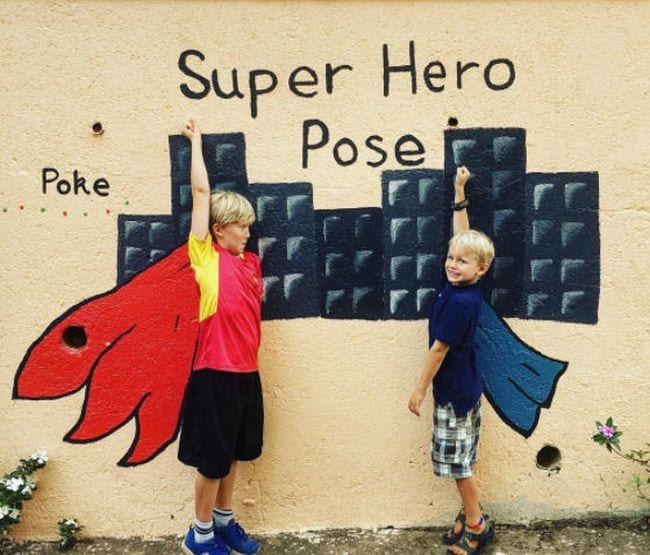
Finish up with a place for kids to pose in triumph. Everyone wants to feel like a superhero!
Source: @lauraavrildove
Thanks to our friends at Moving Minds for sponsoring this post. Be sure to check out the huge selection of classroom tools they have to keep kids active and learning! And show us your own sensory paths. We’d love to see them.
